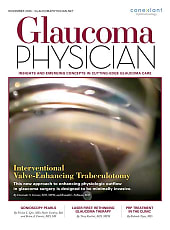PK Comprises Largest Share of Keratoplasty Globally
PK made up the largest share of the corneal transplantation market in 2021, and is expected to produce the highest compound annual growth rate (CAGR) through to 2028, according to “Corneal Transplantation Market Forecast to 2028 – COVID-19 Impact and Global Analysis – Type, Indication, End User,” a study from The Insight Partners, an industry research provider. The market is segmented into single-use PK, Descemet’s membrane endothelial keratoplasty, Descemet’s stripping endothelial keratoplasty, and corneal limbal stem cell transplant, among others.
Christopher Rapuano, MD, chief of the Cornea Service at Wills Eye Hospital, in Philadelphia, says he believes there are two reasons PK leads in corneal transplantation type worldwide:
“First is the availability of EK tissue. It’s just not as available around the world as it is in the United States,” he explains. “Second, surgeons outside the United States aren’t necessarily trained to perform Descemet’s membrane endothelial keratoplasty or Descemet’s stripping endothelial keratoplasty.”
Additionally, the study showed Fuchs’ endothelial dystrophy was the No. 1 reason for keratoplasty in 2021 and is expected to provide a CAGR of 6.8% through to 2028. Further, hospitals were the places most keratoplasties occurred in 2021, and they are expected to register a CAGR of 6.8% through 2028.
In terms of the corneal transplantation market itself, it is expected to reach $640.79 million by 2028 from $420.71 million in 2021, and is expected to increase at a CAGR of 6.2% up to 2028, The Insight Partners study showed.
The reason behind this growth is a global surge in the geriatric population, particularly a subset of patients older than age 80, the study revealed. In looking at the United States, for example, 54.1 million people were aged 65 and older in 2019 (an increase from 39.6 million in 2009), reported the U.S. Department of Health and Human Services. Due to advanced age, this population experiences health issues, including ocular surface and corneal tissue aging, vision impairment, and ocular disease.
To order a copy of the “Corneal Transplantation Market Forecast to 2028 – COVID-19 Impact and Global Analysis – Type, Indication, End user,” study, visit www.theinsightpartners.com/buy/TIPRE00027244/ .

Music May Tame the Anxious Cataract Surgery Patient
Web app–based personalized music intervention prior to cataract surgery may lower anxiety levels and hypertension or decrease the need for sedative medication, reported a study in JAMA Ophthalmology.1
Specifically, the incidence of hypertension was significantly less in those who listened to web app–based personalized music (21 [13.6%]) vs those in the control group, who wore noise-cancelling headphones without music (82 [52.9%]), with a difference between the 2 groups of 39.3% (95% CI, 21.4%-48.9%; P < .001).
Additionally, the mean visual measure of anxiety was less in the web app–based personalized music group (1.4 [2.0]) versus in the control group (3.1 [2.4]), with a difference of 1.5 (95% CI, 1.0-2.1; P = .005).
Further, the mean number of sedative drug injections needed during the procedure was 0.04 (0.24) in the web app–based personalized music group versus 0.54 (0.74) in the control group who wore noise-cancelling headphones, with a difference of 0.50 (95% CI, 0.43-0.57; P < .001).
A total of 310 participants were randomized to each group (155 per group) 20 minutes prior to cataract surgery.

Reference:
- JAMA Ophthalmol. 2021 Sep 1;139(9):1007-1013.
Increased Screen Use Creates Eye Strain and Convergence Insufficiency in Children
Wills Eye Hospital ophthalmologists found that heightened screen time translates to more eye strain and convergence insufficiency in children, confirming eye care providers’ prediction that virtual schooling would have a negative effect on children’s vision.
Specifically, the study, presented at this year’s American Academy of Ophthalmology Meeting, showed that the more time students ages 10 to 17 spent online, the increased likelihood they would experience eye strain and convergence insufficiency, with 57% noticing eye strain and 61% displaying symptoms of convergence insufficiency. Regarding the latter, 17% fell under severe cases.
The study was comprised of 110 students free of vision issues prior who were surveyed before and after virtual learning, which ranged between 3 to 10 hours.

FDA Green Lights Generic Version of Allergan/AbbVie’s Restasis
The FDA approved the first generic version of Allergan/AbbVie’s Restasis, which obtained the government entity’s nod as a brand close to 20 years ago for the increase of tear production in patients whose tear production is presumed suppressed from ocular inflammation linked with keratoconjunctivitis sicca. The sponsor of the approved generic cyclosporine ophthalmic emulsion 0.05% single-use vials was Mylan Pharmaceuticals, Inc.
In 2012, the FDA began research into supporting the creation of bioequivalence suggestions for Restasis as part of its Generic Drug User Fee Amendments Research Program, it said. To date, the government entity has supported 16 research projects associated with cyclosporine ophthalmic emulsion, it said.
National Science Foundation Awards $250,000 to Researcher to Create Adhesive for Corneal Repair and Grafting
 The National Science Foundation granted $250,000 to Iman Noshadi, PhD, an assistant professor of bioengineering at UC–Riverside’s Marlan and Rosemary Bourns College of Engineering, to create a transparent adhesive that speeds healing and decreases the likelihood of secondary infection from corneal repair and grafting, reported UC–Riverside. Dr. Noshadi told the university he hopes the adhesive will be available by 2026.
The National Science Foundation granted $250,000 to Iman Noshadi, PhD, an assistant professor of bioengineering at UC–Riverside’s Marlan and Rosemary Bourns College of Engineering, to create a transparent adhesive that speeds healing and decreases the likelihood of secondary infection from corneal repair and grafting, reported UC–Riverside. Dr. Noshadi told the university he hopes the adhesive will be available by 2026.
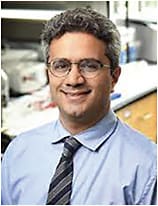
Specifically, the adhesive is comprised of a biodegradable polymer that merges organic salt with high-water solubility and electrochemical properties with polyethylene glycol, enabling long-term regeneration of corneal cells.
“Our gel will result in a safer procedure that will improve the patient’s quality of life with better health outcomes by preventing visual acuity loss or blindness,” Dr. Noshadi explained to UC–Riverside.
He added that it will save time, decrease operative costs, and exclude corrective surgery and the requirement for extensive postoperative care.
Additionally, Dr. Noshadi told UC-Riverside that his research group will assess the adhesive’s ability to stick, its antimicrobial properties, its biocompatibility, and its transparency before testing it on corneal tears and corneal cells.
Denmark Ophthalmologists and Mechanical Engineers Create Anterior Chamber Model to Aid in Corneal Transplantation
 Department of Ophthalmology at Rigshospitalet’s eye specialists joined forces with Denmark Technical University (DTU) to create a model of the anterior chamber of the eye to help them determine new techniques for corneal transplantation, according to a press release issued by DTU.
Department of Ophthalmology at Rigshospitalet’s eye specialists joined forces with Denmark Technical University (DTU) to create a model of the anterior chamber of the eye to help them determine new techniques for corneal transplantation, according to a press release issued by DTU.
Specifically, the model mimicked the anterior chamber’s pressure and temperature and flow of fluid to the back of the cornea and tear film, and it supported the postop phase during which the patient lies and then sits and stands up, so the ophthalmologists could observe the reaction of the cells on the posterior layer of the cornea post-transplant.
Javier Cabrerizo, MD, a clinical associate professor at the Department of Ophthalmology at Rigshospitalet, commented to DTU, “We’re looking forward to using the model in the department’s coming research, and I’ve no doubt at all that — in the long-term — it will benefit our patients that we now have this opportunity.”
University of Arizona College of Medicine–Tucson Researchers to Assess Role of Proteins in Cataract Development
 Researchers at the University of Arizona College of Medicine–Tucson will be using a $1.6 million grant to assess the role of the TRPV1 and TRPV4 proteins in the development of cataracts, in hopes the research will lead to the creation of nonsurgical treatments, according to a press release issued by the school. The researchers, led by Nicholas Delamere, PhD, professor and head of the Department of Physiology, discovered that these proteins collaborate in a way that regulates the lens’ cell function, including water content, size, shape, optical clarity, and focusing power.
Researchers at the University of Arizona College of Medicine–Tucson will be using a $1.6 million grant to assess the role of the TRPV1 and TRPV4 proteins in the development of cataracts, in hopes the research will lead to the creation of nonsurgical treatments, according to a press release issued by the school. The researchers, led by Nicholas Delamere, PhD, professor and head of the Department of Physiology, discovered that these proteins collaborate in a way that regulates the lens’ cell function, including water content, size, shape, optical clarity, and focusing power.
“Human cataract is frequently associated with failure of the mechanisms controlled by TRPV1 and TRPV4,” he explained in the press release. “The hope is that studies like this might pave the way to the development of strategies to prevent or delay age-related eye diseases.”
Specifically, the study will probe how tiny alterations in hydrostatic pressure in the lens’ surface cells activate TRPV1 and TRPV4 to make homeostasis possible. Additionally, the research team, which also consists of Mohammad Shahidullah, DVM, PhD, research associate professor in the Department of Physiology, and Rick Mathias, PhD, and Junyun Gao, PhD, of the Department of Physiology and Biophysics at Stony Brook University, hope to characterize the molecular association between the proteins and the cell’s interior framework, or cytoskeleton.
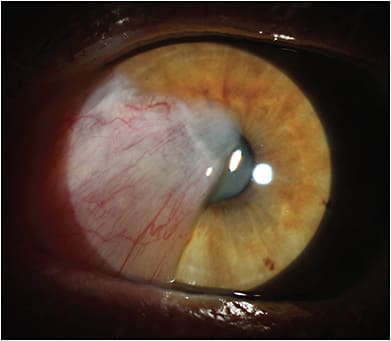
MEET THE NO.1 PLAYER OF THE WEEKLY CORNEAL PHYSICIAN QUIZ
Every Tuesday, a quiz goes up on Corneal Physician’s Facebook and Twitter page, and shortly thereafter, and overwhelmingly, Mohamed Almousa, MD, posts the correct answer, making him the No.1 player and participant of the weekly Corneal Physician Quiz. So, who is this discerning doctor? Find out here:
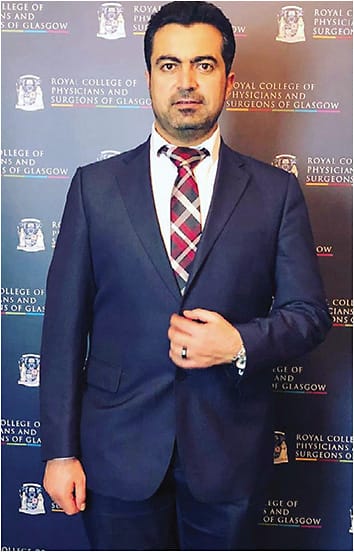
Q: Where do you practice ophthalmology?
MA: In Saudi Arabia.
Q: How long have you been in practice?
MA: Since 2008 when I finished my residency in Syria. I started refractive surgery in my private practice and in 2012, was obligated to leave Syria because of the war. I came to Saudi Arabia to practice ophthalmology in a governmental hospital. My dream now is to get a scholarship for few months or one year to do a corneal fellowship.
Q: What do you like the most about cornea care?
MA: Refractive surgery and all types of keratoplasty.
Q: What was your most interesting case and why?
MA: a PKP in 2010. It was surprising to me that the refraction was less than 1.5 D.
Q: What are your hobbies?
MA: All sports, especially volleyball.
Q: Why do you make a point of participating in the weekly Corneal Physician Quiz?
MA: To keep updated and to continue learning and to refresh my old knowledge.
Q: Are you a fan of any quiz games or quiz shows? If so, which ones?
MA: Yes. The Corneal Physician weekly quiz!
Australian Corneal Bioengineers to Create Bioengineered Tissue
Corneal bioengineers in Australia have joined forces to form a consortium, called BIENCO, that will create bioengineered tissue to meet the challenge of corneal blindness, according to a press release issued by the University of Melbourne, a member of the consortium. Other consortium members are the University of Sydney, University of Wollongong, Queensland University of Technology, Centre for Eye Research Australia, and the NSW Organ and Tissue Donation Service.
Specifically, BIENCO said it will create cost-effective individually tailored, superior corneas and partial grafts for transplant to decrease the amount of donor tissue needed.
“This will significantly improve cost-effectiveness and sustainability of corneal transplants in Australia and increase global access to vision-restoring corneal transplant surgery,” said Professor Gerard Sutton, the consortium’s lead and a corneal specialist at the University of Sydney Save Sight Institute, and co-medical director of an Australian tissue bank.
Scleral Lens and Prosthetic Replacement of the Ocular Surface Ecosystem Aid in Controlling Graft-versus-Host Disease Symptoms
 Scleral Lens and Prosthetic Replacement (SL/PDs) of the Ocular Surface Ecosystem helped to manage the symptoms of graft-versus-host disease (GVHD) (e.g., gritty, dry eyes), reported a recent study in Clinical Ophthalmology.1
Scleral Lens and Prosthetic Replacement (SL/PDs) of the Ocular Surface Ecosystem helped to manage the symptoms of graft-versus-host disease (GVHD) (e.g., gritty, dry eyes), reported a recent study in Clinical Ophthalmology.1
Specifically, wearing scleral lenses resulted in a mean of 5.42 ± 1.86, median (IQR) of 6.0 (4.0 to 7.0) symptoms improving, with the most common being dryness/grittiness of the eyes (94%), eye pain (92%), and quality of life (89%). Additionally, 56% of those wearing scleral lenses said they’d wished the lenses had been suggested sooner.
The study was comprised of 306 subjects registered with the Blood and Marrow Transplant Information Network, who answered a 15-question survey that reviewed transplant history, GVHD history, symptoms and onset, treatments employed, the amount of symptom control, and experience in SL/PDs.
Reference:
- Clin Ophthalmol. 2021 Dec 25;15:4829-4838.
First Tasmanian Devil Undergoes Cataract Surgery
Derrick, the Tasmanian Devil, a resident at Australian Reptile Park, in Australia, became the first such animal to undergo cataract surgery. His case was deemed critical, so he had the surgery the same day as his assessment, according to the Hunter Valley News. Caretakers at the Australian Reptile Park say he’s making a lot of progress.
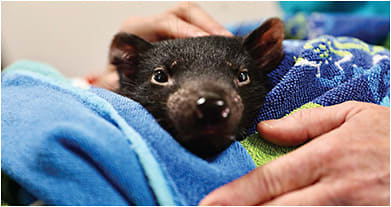
WANTED
COMPELLING CLINICAL IMAGES
How would you like to have one of your clinical photos featured in Corneal Physician’s “Image of the Month” section? (See https://buff.ly/3muF8PN .) We are on the lookout for high-resolution tiffs or JPEGS that reveal pathology and more! If you have an image you’d like to share, please email Corneal Physician’s Managing Editor Jennifer Kirby at jennifer.kirby@pentavisionmedia.com.
ALSO NOTEWORTHY
- AbbVie made changes in the leadership at Allergan Eye Care. Jag Dosanjh, formerly senior vice president, Medical Therapeutics, is now president, U.S. Neuroscience and Eye Care; Ramin Valian, formerly vice president, Glaucoma and Reimbursement, is now vice president, Eye Care; and Glen Curran, formerly vice president, Anterior Segment, is now vice president, Botox (onabotulinumtoxinA) Therapeutics.
- AcuFocus received an FDA Approval Letter for the company’s IC-8 small IOL. Specifically, the letter indicates the FDA completed its review of the IOL Premarket Approval Application (PMA) and determined that the PMA meets the government entity’s requirements of its Cosmetic Act. The FDA and can approve the application following successful completion of the pre-approval inspections at the company’s manufacturing facilities in the United States and internationally.
- Aerie Pharmaceuticals Inc appointed Raj Kannan as its CEO and director. Mr. Kannan has over 25 years of experience in leading and growing organizations and supporting multiple successful launches across therapeutic areas in the United States and globally, the company said. Before joining Aerie, he was the CEO and president of Chiasma Inc, where he led the organization through the approval and the launch of the first oral therapy in over a decade for acromegaly patients, Aerie said.
- Akorn Eye Care acquired the exclusive distribution rights for AcellFX (acellular amniotic membrane) from Blythe Medical. AcellFX is a small, thin air-dried membrane ready for immediate use without the need for thawing or rinsing. It is for homologous use, providing protection or covering in ocular surface repair, the company said.
- Alchemy Vision Project announced an updated release of ENTRY, a digital curriculum focused on ophthalmic technician training. The new edition includes a personalized learning roadmap customized to each technician’s skills and needs, a frequently updated library of lessons, live-streamed lessons from industry professionals, quizzes and assignments, a final exam, and a variety of study tools.
- Alcon launched the Clareon family of IOLs (Clareon Monofocal, Clareon PanOptix, Clareon PanOptix Toric, Clareon Vivity). The IOLs offers sharp, crisp vision with a proprietary edge created to help decrease glare and posterior capsular opacification, the company said. Additionally, the STABLEFORCE Haptics provide axial and rotational stability, Alcon said. Clareon Toric will be available in the United States later this year.
- Aurion Biotech named the following to its medical advisory board: John Berdahl, MD – Vance Thompson Vision; Eric Donnenfeld, MD – Ophthalmic Consultants of LI & CT; Marjan Farid, MD – Gavin Herbert Eye Institute, UC Irvine Health; Nicole Fram, MD – Stein Eye Institute, UCLA Geffen School of Medicine; Matthew Giegengack, MD – Wake Forest University School of Medicine; Jose Güell, MD – Instituto de Microcirurgía Ocular; and Richard Lindstrom, MD, founder and attending surgeon of Minnesota Eye Consultants. The board is chaired by Edward Holland, MD, appointed Aurion Biotech’s chief medical advisor.
- Bausch Health Companies Inc appointed Dr. Yehia Hashad executive vice president of Research & Development and chief medical officer. Dr. Hashad comes from Allergan/AbbVie, where he held various roles over 11 years, including leading Allergan’s global clinical development program for its eye care portfolio, the company said.
- BostonSight announced its new free-form lens design feature, Smart360, for the BostonSight Scleral. It enables practitioners to design a free-form lens from 16 mm to 19 mm. The design feature currently integrates with the Oculus Pentacam CSP and CSP Pro and with Eaglet Eye’s Eye Surface Profiler (ESP). BostonSight Scleral also offers two “triple-play” FitKits, which are diagnostic trial sets with three diameters per set: 16 mm, 16.5 mm, and 17 mm or 18 mm, 18.5 mm, and 19 mm.
- C. Light Technologies appointed Lon Dowell chief commercial officer (CCO). Mr. Dowell has over 30 years of experience in strategic planning, operations, and leadership in global medical device companies, including at Zeiss, Leica, and Topcon. As CCO, Mr. Dowell will head the company’s commercial strategy, including marketing and sales, as well as build business relationships with research organizations, clinicians, and pharma.
- CooperCompanies announced Dan McBride, executive vice president (EVP), chief operating officer of CooperCompanies, has taken on additional responsibilities that span the organization. In conjunction with this move, Jerry Warner EVP, Americas and Global Commercial Functions of CooperVision, was promoted to president of Cooper-Vision. In this new role, Mr. Warner will oversee all worldwide functions within the CooperVision business unit and continue to report to Mr. McBride, CooperCompanies said.
- Dompé announced that the first patient is enrolled in its Phase 3 trial of cenegermin to evaluate the efficacy and safety of the drug in severe Sjögren’s-related dry eye disease patients. The trial is part of a program comprised of two randomized, double-masked, vehicle-controlled studies to be conducted at more than 10 sites in the United States and Europe. Visit www.clinicaltrials.gov .
- Dr. Bronwyn Bateman, a former professor of ophthalmology and pediatrics at the David Geffen School of Medicine at UCLA, gifted the college $10 million to support ocular genetics research projects. Specifically, the UCLA Bronwyn Bateman Center for Ocular Genetics will advance clinical and translational science in the field and will complement UCLA Stein Eye Institute’s overall goals of preserving and restoring vision by preventing and treating eye disease, eradicating preventable blindness, and training the next generation of exceptional vision specialists, a UCLA-issued press release said.
- Glaukos Corporation announced the following executive changes, which become effective this month: Joseph Gilliam, president and chief operating officer; Chris Calcaterra, executive vice president, Global Commercial Operations; Alex Thurman, senior vice president–chief financial officer; and Tomas Navratil, PhD, chief development officer.
- Haag-Streit Group appointed Jeff Sieve as CEO for Haag-Streit USA, based in Mason, Ohio. Mr. Sieve succeeded Ernest Cavin, PhD, who recently left the company to pursue new opportunities. Mr. Sieve served most recently as the head of sales for the U.S. refractive business for Zeiss.
- Harrow Health acquired the U.S. commercial rights to branded eye drops from Novartis, including Iopidine 1% and 0.5% (apraclonidine hydrochloride); Maxitrol (neomycin and polymyxin B sulfate and dexamethasone) 3.5mg/10,000 units/0.1%; and Moxeza 0.5% (moxifloxacin hydrochloride). The acquisition includes sales, marketing, and distribution rights for Harrow’s subsidiary, ImprimisRx, and allows for a transition period where Novartis will continue to sell the products and transfer the net profit to Harrow. After the transition period, the products will be manufactured by a third party, while Novartis will retain all rights to the products outside the United States.
- I-MED Pharma USA appointed Michelle Schnabel as vice president, Business Development and Brent Jones to chief commercial officer. In other news, the company announced it will directly sell its products, such as its I-Drop artificial tears for dry eye disease (DED), to eye care professionals throughout the United States, and that it gained exclusive distribution rights for two DED devices from France’s ESW Vision: E>Eye, which uses polychromatic pulsed light to stimulate meibomian gland secretions, and Tearcheck, which performs and analyzes results from nine types of DED exams in under two minutes. Visit us.imedpharma.com . In other news, I-Med Pharma Inc. and NTC srl announced that I-Defense, a long-lasting, lubricating ointment containing 0.4% sodium hyaluronate, that is indicated for the relief of dry eyes and lagophthalmos symptoms, was successfully registered with the FDA.
- Kala Pharmaceuticals bought Combangio, Inc, a private, clinical-stage company creating regenerative biotherapies for severe ocular surface diseases. Combangio is working on KPI-012, an investigational secretome therapy to address the wound-healing process in persistent corneal epithelial defect, among other severe ocular diseases induced by impaired corneal healing. The company said it plans to submit an Investigational New Drug (IND) application to the FDA and, subject to regulatory clearance, initiate a Phase 2/3 trial of KPI-012 in the third quarter of 2022.
- Keeler USA and Avellino entered into a distribution agreement for AvaGen, a genetic test to identify patients’ risk of keratoconus (KCN) and pinpoint TGFBI corneal dystrophies. The test, which gives a genetic risk score by examining more than 2,075 KCN-related genes and gene variants, allows for an earlier diagnosis, potentially protecting a patient’s vision, Avellino said.
- Laboratories Théa SAS (“Théa”) agreed to purchase 7 branded ophthalmic products from Akorn Operating Company LLC, including the acellular amniotic membrane (AcellFX), azithromycin ophthalmic solution (AzaSite), and lidocaine HCl ophthalmic gel (Akten). Additionally, Théa said it will add Akorn’s almost 50-person sales force, which Théa said it expects to expand in support of anticipated growth and launches of new products in the United States.
- LayerBio Inc announced that the U.S. Patent and Trademark Office issued U.S. Patent No. 11,185,441 for coverage of a variety of drug product compositions, methods of use, and delivery systems for the company’s propriety bioerodible drug delivery rings that release therapeutic medications for use in cataract surgery. LayerBio’s lead product candidate OcuRing-K is a sustained-release NSAID formulation of ketorolac, an opioid-sparing analgesic with proven efficacy for reducing inflammation and pain associated with cataract surgery.
- LENSAR Inc received FDA acceptance of its 510(k) submission for the company’s next-generation ALLY Adaptive Cataract Treatment system for substantive review. The company said it plans to submit an additional 510(k)application seeking clearance for the phacoemulsification features within the integrated ALLY system later in 2022, with a planned launch of ALLY in the second half of 2022.
- Leiters, an FDA-registered 503B outsourcing provider of hospital and ophthalmology-compounded sterile preparations, completed the acquisition of a new manufacturing facility in Buena, NJ. The 110,000-square-foot facility will be cGMP compliant with automated capabilities to provide additional 503B capacity and redundancy to the company’s existing capabilities and portfolio in Englewood, Colo., Leiters said.
- Ocular Therapeutix Inc announced the FDA approval of its Supplemental New Drug Application (sNDA) to broaden the Dextenza label to include an additional indication for ocular itching linked with allergic conjunctivitis. In other news, Ocular Therapeutix Inc announced that the CMS confirmed that Dextenza will continue to be separately paid by Medicare in the hospital outpatient department and ambulatory surgical center settings for the year 2022. Finally, the company announced positive topline results from the Phase 2 clinical trial of OTX-DED (dexamethasone intracanalicular ophthalmic insert) to treat short-term dry eye.
- Ocuphire Pharma Inc appointed 6 new key opinion leaders from the specialties of retina and refractive surgery to its Medical Advisory Board. The refractive surgery specialists: Y. Ralph Chu, MD, James Katz, MD, and Mitchell A. Jackson, MD. See additional information at www.ocuphire.com/about/medical-advisory-board .
- Omeros Corporation completed the sale of phenylephrine and ketorolac intraocular solution (Omidria) 1.0%/0.3% to Rayner Surgical Group Inc, an affiliate of Rayner Surgical Group Limited. Omidria 1%/0.3% is an FDA-approved drug used during cataract surgery or lens replacement to preclude intraoperative miosis, and it reduces postoperative ocular pain, the company said.
- Oyster Point Pharma Inc announced the FDA approval of varenicline solution 0.03 mg (Tyrvana Nasal Spray) for the signs and symptoms of dry eye disease. The spray is believed to bind to cholinergic receptors to activate the trigeminal parasympathetic pathway, resulting in increased production of basal tear film.
- Physician Recommended Nutriceuticals (PRN) appointed Alice Epitropoulos MD, FACS, as its chief medical officer. Dr. Epitropoulos, who specializes in refractive cataract surgery and dry eye disease, will oversee the global clinical development and educational initiatives for PRN.
- Quantel Medical launched the C.STIM IPL system to treat meibomian gland dysfunction, inflammation, and Demodex. The system was designed to combine the latest technology with a “sleek, robust, and ergonomic design,” the company said.
- The Refractive Surgery Council reported laser vision correction procedure volume for Q4 2021 increased 32% over 2020, with 190,509 procedures. Also, the total laser vision correction volume for 2021 was over 833,000 for the first time since the organization started tracking such procedures in 2015, it said.
- Sight Sciences Inc announced the FDA 510(k) clearance of the TearCare System for the treatment of meibomian gland dysfunction. The TearCare System provides safe and effective localized heat therapy, in conjunction with manual gland expression, intended to help soften or liquify thickened meibum for effective gland clearance, the company said.
- Stuart Therapeutics Inc announced the topline results of its first Phase 2 clinical trial for ST-100, in dry eye disease patients. The topical eyedrop met its primary endpoint – Schirmer’s Test Responder Rate (defined as a statistically significant difference between the percentage of patients achieving a 10 mm increase or more in Schirmer’s tear test scores) at 28 days (p=0.0266). ST-100 also demonstrated significant positive results in several symptoms and ocular surface staining scores as early as treatment day 7 in both the intent-to-treat population, and the treated patient subpopulations, reported the company.
- Tarsus Pharmaceuticals Inc appointed Elizabeth Yeu, MD, to its Board of Directors. As part of this appointment, she joined the Science and Technology Committee, which provides strategic direction on external and internal innovation and pipeline opportunities. Dr. Yeu continues to serve as Tarsus’ chief medical advisor. Also, the company named José Trevejo, MD, PhD, its chief medical officer. Prior to Tarsus, he was chief development officer at Rocket Pharmaceuticals and CEO of SmartPharm.
- TearLab Corporation appointed Adam Szaronos president and CEO, and Jim Mazzo executive chairman of TearLab’s Board of Directors. Mr. Szaronos joined TearLab’s executive team as chief commercial officer in 2020. Mr. Mazzo has 40+ years’ experience in the eye care industry.
- TissueTech Inc and Amniox Medical Inc rebranded as BioTissue Inc. The rebranding includes a new design that represents healing, energy, and life, the company said. In other news, BioTissue Inc. named Ted Davis its president and CEO. He succeeds TissueTech founder and former CEO Amy Tseng, who retired. Prior to this appointment, he served as president and CEO of Active Implants LLC, a medical device company that focuses on the knee preservation segment of sports medicine, for 5 years.
- Ziemer USA Inc partnered with CorneaGen to bring new applications to the Z8, enabling it to bring new procedures to the ophthalmic field and further their mutual mission to create technology that helps solve ongoing clinical challenges, according to a press release. CP



